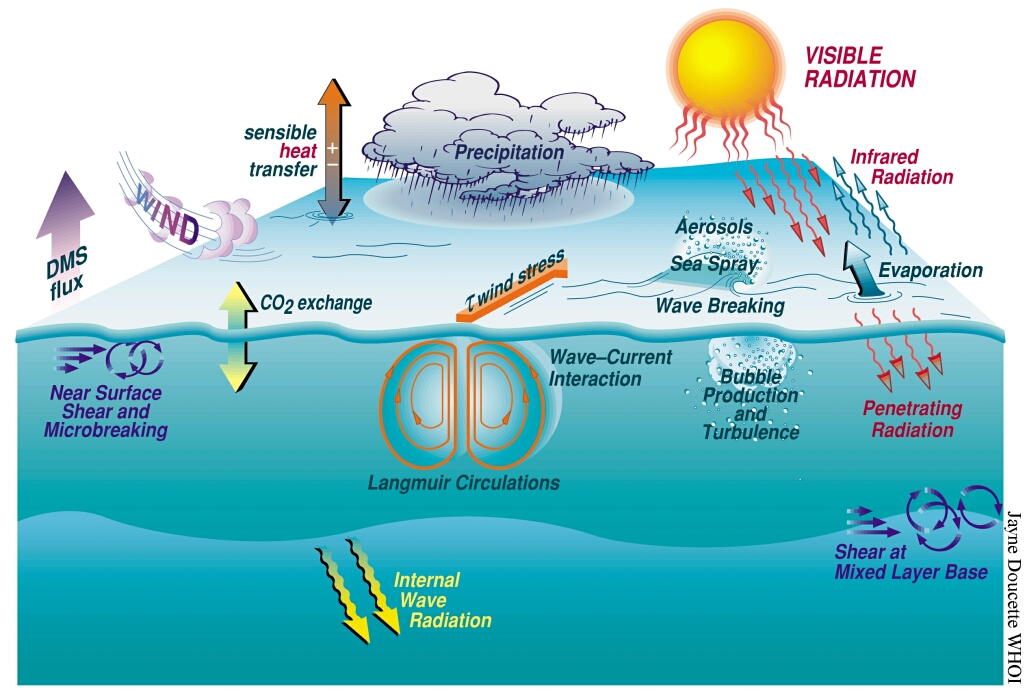Physics and Chemistry of small-scale air-sea interactions
Abstract:

More than two-thirds of the earth's surface is covered by oceans. As the largest interface between the two most important compartments of the system earth --- the ocean and the atmosphere --- the ocean surface plays an eminent role.
Processes taking place in the vicinity of surface control the transport processes between the atmosphere and the oceans. This includes the exchange of
- momentum (wind over the ocean is one of the driving factors for ocean currents),
- sensible heat and latent heat (evaporation of water vapor), and
- volatile chemical species including climate relevant gases such as carbon dioxide, methane, halocarbons, and many other environmentally important species,
On both sides of the ocean surface thin viscous, heat and mass boundary layers are formed, in which molecular diffusion is the dominant transport mechanism. The thickness of these layers controls the speed of exchange (transfer velocity) and depends on a multitude of factors and processes that cause near-surface turbulence.
In this course, the current knowledge and open questions concerning small-scale processes are presented. In addition, imaging measuring techniques are introduced, which give a direct quantitative insight into the complex spatio-temporal structures of the physical mechanism controlling these processes.
